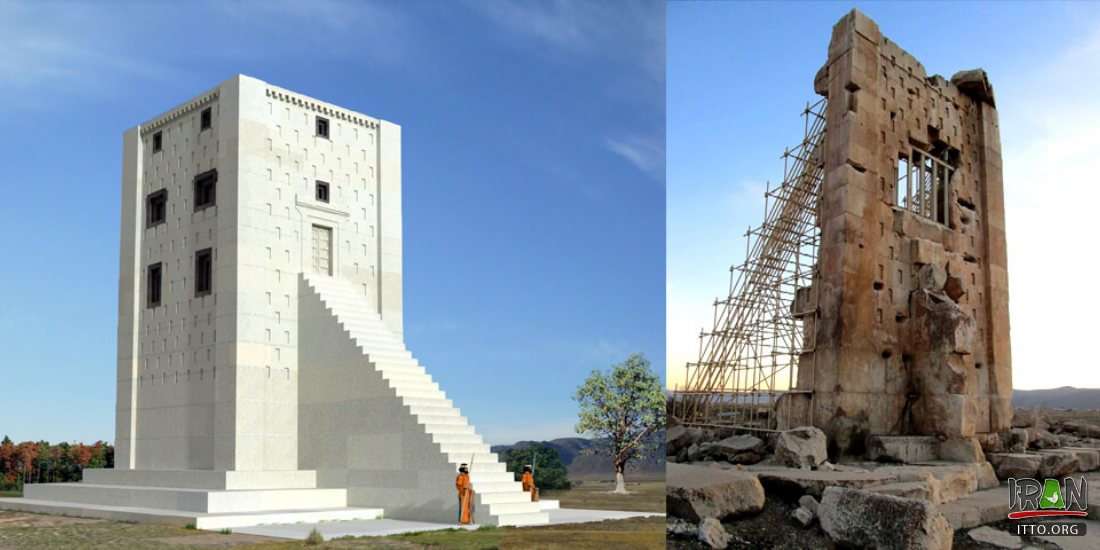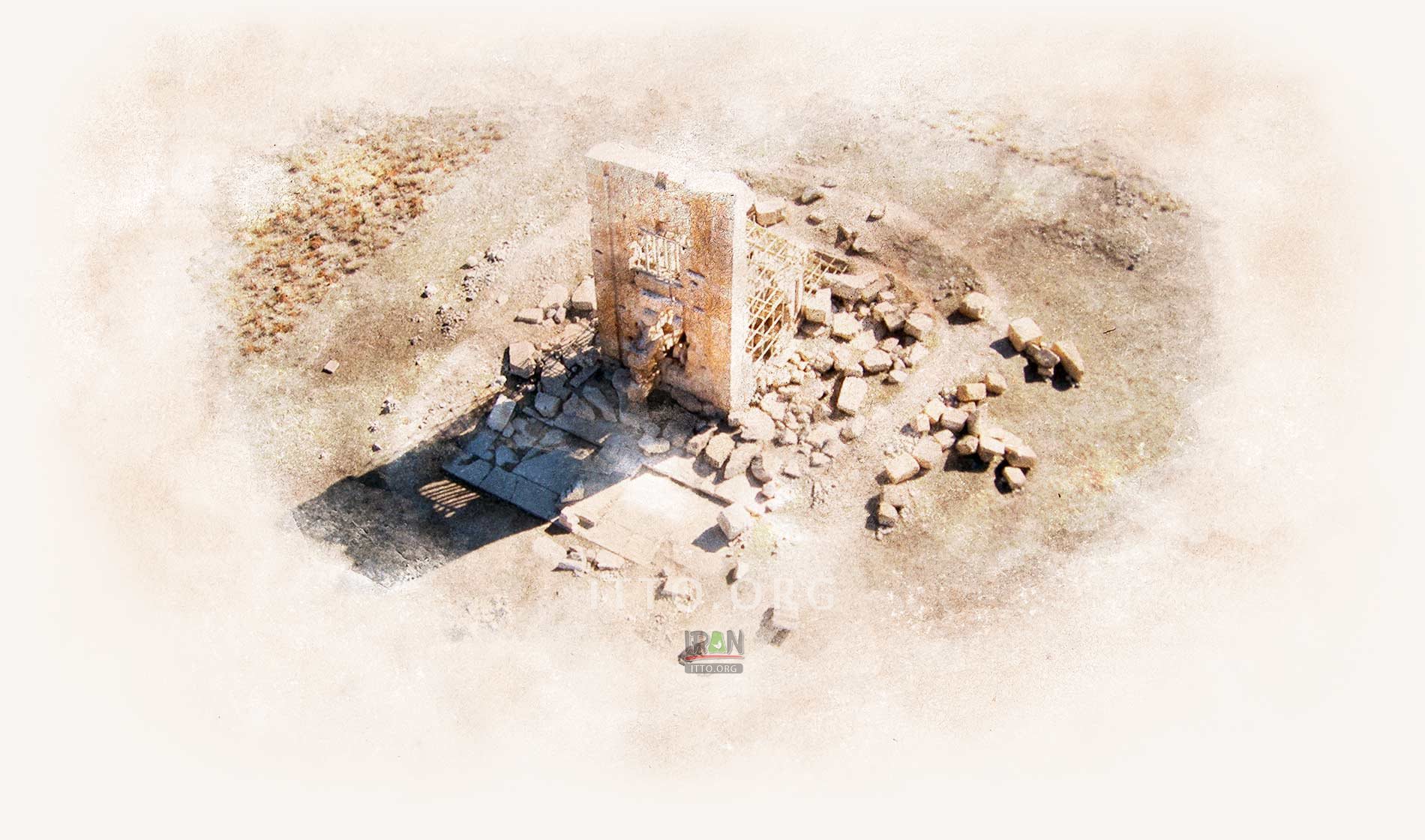A huge stone slab measuring 1.60 meters in height comprised of 5 broken pieces at a distance of 100 meters from Tall-e Takht near Pasargade in Marvdasht (Fars Province). Tall-e Takht or 'throne hill' is a citadel located at the heart of Pasargadae historical complex, the first dynastic capital of the Achaemenid Empire, founded by Cyrus the Great.
Remains of an unfinished tomb denoted to Achaemenid King Cambyses II can be seen close to Tall-e Takht, from which only a wall has survived the ravage of time. The Tomb, also known as Zendan-e Soleiman/Eskandar (Solomon/Alexander Prison), originally consisted of an almost square, 4-meter-high tower in which a solitary, raised room was approached by a projecting monumental stone staircase. It resembles the Achaemenid era monument of Zoroaster's Kaba in Naqsh-e Rostam historical site.

The Tomb, also known as Zendan-e Soleiman/Eskandar (Solomon/Alexander Prison), originally consisted of an almost square, 4-meter-high tower in which a solitary, raised room was approached by a projecting monumental stone staircase.
According to the inscriptions of Bisotun historic site, the mausoleum of Cambyses was destroyed by the Mongol invader Geomat who disguised himself as Bardia, King Cambyses' brother and came to power shortly after Cambyses' assassination and razed down Achaemenid temples. Achaemenid King Darius the Great clearly accounts in Bisotun inscription that he restored the Achaemenid temples after murdering Geomat. Evidence left on the stone gate very well confirms that it was restored during the early days of Darius the Great's reign.
Cambyses II (Kambujiya) son of Cyrus the Great (r. 559–530 BC), ruled the Achaemenid Empire from 530 until his death in 522 BC. Cambyses' grandfather was Cambyses I, king of Anshan. Following Cyrus the Great's conquest of the Near East and Central Asia, Cambyses II further expanded the empire into Egypt during the Late Period by defeating the Egyptian Pharaoh Psamtik III during the battle of Pelusium in 525 BC. After the Egyptian campaign and the truce with Libya, Cambyses invaded the Kingdom of Kush (located in what is now the Sudan).
The mausoleum of the son and successor of Cyrus the Great, Persian King Cambyses II, was also registered with other ancient monuments of Pasargadae historic complex in UNESCO's list or World Heritage List in 1979.
Prison of Solomon:Around 500m north of Cyrus’ Private Palace are the remains of the Prison of Solomon (Zendan-e Soleiman), variously thought to be a fire temple, tomb, sundial or store. On the hill beyond is the Tall-e Takht – a monumental 6000-sq-metre citadel used from Cyrus’ time until the late Sassanian period. Local historians believe the references to Solomon date from the Arab conquest, when the inhabitants of Pasargadae renamed the sites with Islamic names to prevent their destruction.



